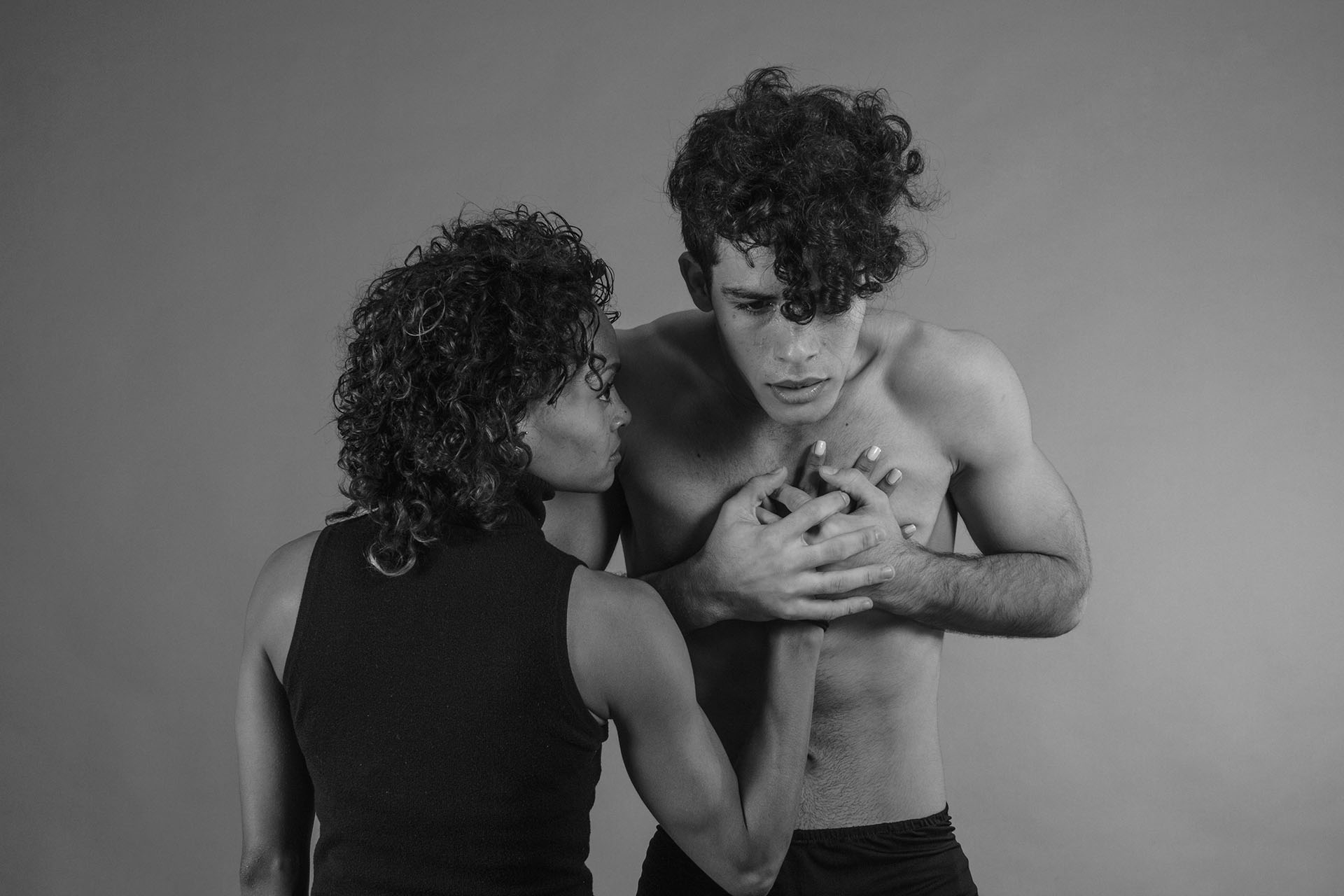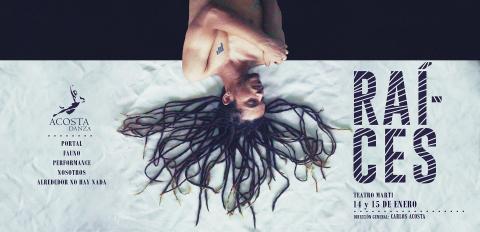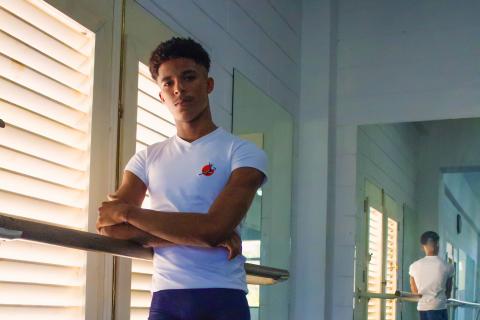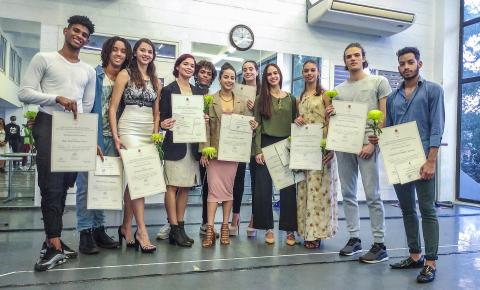Acosta Danza's studio does not stop working. The large windows in the living room that overlook the street of El Vedado leave exposed to the passers-by the constant effort and anxiety that these days moves the young dancers.
On March 2, 3, 4 and 5, the group of artists will return to the scene of the Gran Teatro de La Habana Alicia Alonso with the commitment to release three new works, each one very different.
Ely Regina Hernandez, dancer and young choreographer, will premiere Avium, her visit to a recurring theme of classical dance, women and men birds, to develop their ideas on the cycle of life and solidarity between species. "I was inspired by the famous swan music of Camille Saint-Saëns' carnival," says Hernández. "My initial idea was to make a duet with that music and pay homage to the subject with elements of classical ballet like arms, but with expression, mixing a contemporary dancer with a classical dancer that allowed the more traditional partneo.
Ely Regina skirts the established idea of the dying swan, elaborates and multiplies it. The inclusion of a dance body allows the description of the circle of life from birth, the first flight, to death. In the work, bodies are eggs from which life arises, and then transmute themselves into symbols of mortal beauty. "The ending is open, and although the subject of the death of the swan returns, the public can take different ideas of what happened," he says.
For Avium's music, Ely Regina has worked directly with the musician José Víctor Gavilondo, who is, among other things, professor of Orchestration and Composition at the University of the Arts (ISA), keyboardist of the group Synthesis and producer and coordinator of Music Concert at the Cultural Center Cuban Art Factory (FAC).
Gavilondo assumed the theme of Saint-Saëns as a starting point and composed a score that transforms into sounds the atmosphere and feelings through which the choreography transits.
With Us, Beatriz García and Raúl Reinoso develop in the art the experience of both as a couple. Beatriz, a dancer from the company Malpaso, has joined the cast of Acosta Danza to, along with Reinoso, transmit to the dancers some secrets of its creation.
We are a very complex work in its simplicity. According to García for a dancer to fully interpret it must be sensitized as much as his choreographers were in the complex moments of creation. "It must be very sincere in the execution of it, to use technique as a means to express everything that the work has, and not as an end; Must look for tenderness, torture and everything that gave rise to choreography, "he explains.
The piece will have among its attractions the performance of two young and excellent musicians who, along with the performance of the dancers, will interpret the score on the scene: his composer José Víctor Gavilondo, at the piano, will be accompanied by the cellist Alejandro Martínez.
"It will be very exciting, even heartbreaking for me," confesses Beatriz. "They are moments of our lives that will be delivered to the scene turned into a work of art. We expect the public to receive their encouragement. "
TWELVE
Jorge Crecis comes from the sport. At age 22 he entered the world of dance. His work mixes both areas, within the dance creates a very athletic methodology and very pragmatic.
"I face the dancer like an athlete. I give birth to basic physical qualities like speed, strength and endurance and I work from very basic gestures like running, jumping, spinning, rolling, grabbing, opening ... I work the universality of the gesture. In any technique it jumps, runs is rotated, what changes is the aesthetics of how it is done. I go to more basic levels to build the body for what the dancer needs. I use this basic level of human gesture to reach a higher area of human spirituality, in that state of unconsciousness that is generated when one is concentrated doing work and everything flows comfortably.
From these ideas, the work proposed by Crecis with Twelve is very complex, demanding: "In this piece, twelve dancers participate who change roles three times during the play, and never assume the same role, that is, that somehow , You have to know 36 different roles of the piece. The piece goes from the most basic of human movement, running, jumping, throwing made in a very complex mathematical way. That means that no matter how many times they rehearse or dance the piece, they will always have a real experience at the moment of creating it, but above all they have to be extremely attentive and very united as a group because they have to do it all together at the moment ".
"At first I imagined them as scenography, as something aesthetic. I have always been concerned about the environment, the consumption of water in the world, the lack of water. But since I was very interested in the gesture and the action, we started to launch them and the idea of how to use external agents came up to know how concentrated the dancers are in the piece. In this work throw the bottles a thousand times in 20 minutes, ie every 0.8 seconds there is a bottle in the air. If the dancer is not concentrated, the bottle will not be trapped and will fall to the ground. I insist that the falling bottle is not the problem: the problem is that the dancer is not concentrated, and the water bottle has only informed us. The water bottles are the thirteenth dancer of this piece.
"It's been one of the richest experiences I've had lately. When Carlos began to tell me about his company project, I liked his vision so much that I came to Cuba with great expectations and here I have lived it. The dancers are so skilled, have such an intuitive knowledge of their bodies, so much human and artistic quality that professionally for me, more than a job, has been a gift.
NOSOTROS
"The work arises from the need to create something after so many years of relationship," says the young creator. "It is not a narrative work, but it contains many feelings, a lot of history that, without being told, serves as a motive for the piece to be sincere: each gesture has below a memory, a period, a crisis, a summit of our relationship.
The Spanish choreographer Jorge Crecis was invited by Carlos Acosta to train the dancers with his particular method and from that workshop a choreographic work arose. For Acosta Danza, Crecis took as his starting point his work titled 36 and turned it into Twelve: "It is a very pratical piece", argues the creator. "It is a work of dance that is not completely closed, a score that the dancers have to know well and perform very concentrated whenever they dance."
Something that will catch the attention of Twelve viewers will be the presence and use of 36 bottles of water in the scene: "The bottles arrived in an experimental way," explains the creator.
- What has been the experience with Acosta Danza dancers?
"It's been one of the richest experiences I've had lately. When Carlos began to tell me about his company project, I liked his vision so much that I came to Cuba with great expectations and here I have lived it. The dancers are so skilled, have such an intuitive knowledge of their bodies, so much human and artistic quality that professionally for me, more than a job, has been a gift













Leave us your comment
Your e-mail will not be published